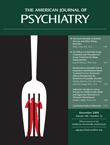There are two protagonists in Aleksandar Hemon’s incredibly rich and evocative novel, The Lazarus Project . The book opens with a straightforward account of a historically true event, the shooting death of Lazarus Averbuch. Averbuch, a Polish-Jewish immigrant, escaped the pogroms only to die at the hands of George Shippy, the Chicago chief of police, in 1908. Shippy was convinced that Averbuch was an anarchist bent on his assassination.
The brilliant opening chapter manages to simultaneously convince the reader of Averbuch’s naivete and innocence while juxtaposing the subsequent newspaper coverage that distorts his motives and portrays him as a dangerous intruder.
The assistant chief of police, Schuettler, whose descendants figure later in the novel, uncovers a piece of paper in Averbuch’s hatband that says, “1. My shoes are big. 2. My room is small. 3. My book is thick. 4. My soup is warm. 5. My body is very strong.”
It is clear, the story continues, “that the sentences are a coded description of the stages of a murderous plot.” It is clear to the reader without any stage whispering at all that this is a young newcomer trying to learn the English language.
The second protagonist is Brik, a Bosnian immigrant living in a Chicago circa 2004 but still brimming with unassimilated souls vulnerable to all manner of misunderstanding and misinterpretation. Brik’s first-person narrative is entirely different from the flat third-person account of Lazarus’s life and death, which is suffused with sadness and helplessness. Brik is irreverent, hypomanic. His sentences run on, punctuated by semicolons. His life, marriage, and career are chaos. His goal is to secure a grant for something he calls “the Lazarus Project,” research into the life of Lazarus Averbuch. He wants to understand the earlier immigrant experience and the prejudices that led to his predecessor’s demise.
His potential angel, the grantor of research money, is Susie Schuettler, the granddaughter of the policeman who investigated Lazarus’s death.
Brik is an impecunious writer with grandiose dreams and minimal income. His wife, Mary, is an Irish-Catholic neurosurgeon and obviously the family’s breadwinner. Brik’s every action intends redemption in her eyes, for he is consumed with guilt at the difference in their usefulness, their work ethics, and their discipline. Yet his path in search of Lazarus carries him ever further from her. “ Mary would not like me going away, particularly because she had suggested that it would do us good—especially her—to go on a vacation; possible dates had floated on the surface of our dinner conversations, then sunk into the after-dinner stupor. And I certainly didn’t want to beg her for money, again, and go through the whole debasing process of proving that my plans, hopes, dreams are not overly indulgent.”
The structure of the novel is unique, careening between the matter-of-fact yet heartbreaking narrative of Lazarus’s misadventures in cruel turn-of-the-century Chicago, which is told with distance and reserve, and the increasingly frenetic first-person account of Brik’s progress toward understanding the immigrant experience, which takes him back to war-torn Bosnia. The dual plots are told in alternating chapters. Each chapter is flanked by a picture either from the Chicago historical society or from a contemporary of Hemon’s, Velibor Bozovic. The book thus has a multimedia feel without a shred of gimmickry or contrivance.
Aleksandar Hemon came to the United States as a published writer in Bosnia. He was stranded after the Bosnian civil war and enrolled in a master’s program at Northwestern University, where he devoured the English canon and then started writing in English. When an agent saw a piece of his in a prestigious literary journal, TriQuarterly, he was on his way. The Lazarus Project was a finalist for the National Book Critics Circle award in fiction and also for the Booker Prize in 2008, Britain’s highest literary award. These achievements gain in stature with the realization that English is not Mr. Hemon’s native language, a fact that has led some literary critics to compare him to Joseph Conrad, another master stylist whose native language was Polish.
The novelist searches for the truth through fiction. In Hemon’s book, truth and fiction do an elaborate dance with one another. In the end, the reader appreciates with emotional depth how hard it is ever to know what is true. But the search, in this case, is a great literary experience.

